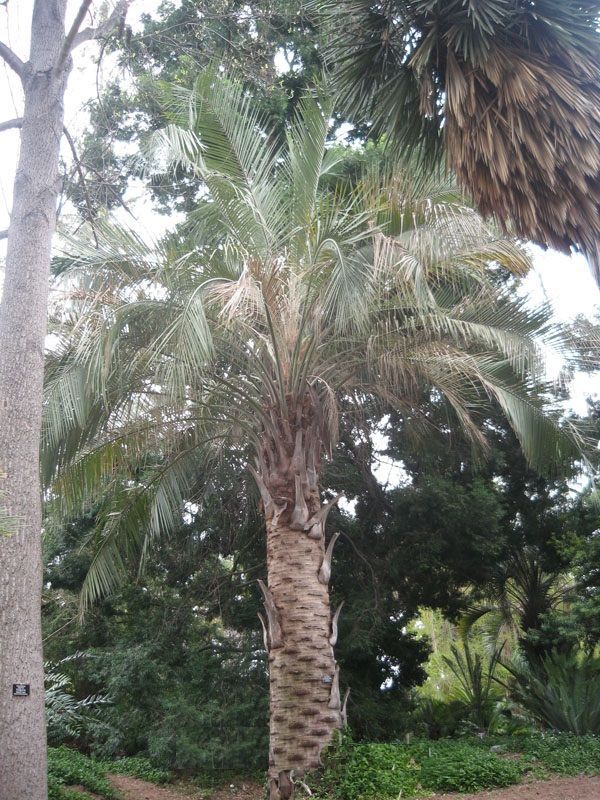Butia odorata (previously capitata) x Jubaea chilensis
Common Name: Butia odorata (previously capitata) x Jubaea chilensis
Sun: Full sun to partial sun
Growth Rate: Slow
Fertilizer: None
Water: Very Low
Cold Tolerance: around 15-20deg F
History: This hybrid has been around for a couple decades. It is in many private gardens in California, Arizona, Texas, north Florida, and probably others.
Production: The seed parent is Butia odorata (aka Pindo Palm; Jelly palm) from Brazil, Argentina, Paraguay, Chile, and Uruguay. The pollen parent is Jubaea chilensis (aka Chilean Wine Palm).
Benefits: Extremely hardy. This hybrid will grow in just about any soil, lives off very little water, requires no fertilizer, grows very fast, and is adaptable to severe frost and just about any amount of sun. It is sterile so there is no need to pull or spray seedlings that sprout underneath other pure palm species. This palm produces long, curving fronds ranging from 6-8 feet long (depending on which parent each plant take on more traits from). cluster) are highly-variable, with trunks and frond size varying considerably.
Identification: Difficult to identify apart from pure Butia or Jubaea. If a plant comes from manual cross-pollination, it is probably a legitimate hybrid. If it comes from seed grown from an open-pollinated Butia, for instance in a botanical garden, it has a moderate likelihood of being a hybrid. If it is from seed collected from a Butia x Jubaea hybrid tree, the seed is will produce an F2 plant which will likely be back-crossed with another cocosoid palm in the vicinity.

Seabreeze Erosion Solutions of Florida
Located in South Florida?
Speak to Our Erosion Specialists Today.
Copyright Seabreeze Nurseries Inc. | All Rights Reserved | Designed by Yeppy Marketing Agency
